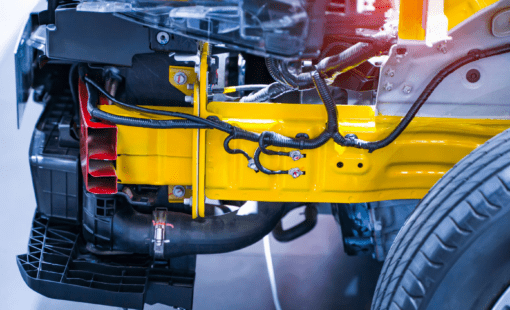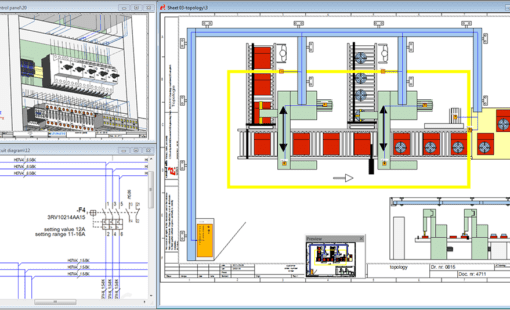Hierarchy vs Topology
Early stages of complex designs often lack the specific details required to create a detailed design. Therefore, topology planning is an important part of managing the placement of systems and sub-systems. The hierarchical design is a top-down design approach to communicate the details of a complex system. It is easy to use the terms ‘Hierarchical Design’ and ‘Topology Planning’ incorrectly and interchangeably. On one hand, the system location is the primary driver of a topological arrangement. On the other hand, logical and functional order is the primary driver of the hierarchical design.
Hierarchical Design with E3.cable
A robust hierarchical design representation is a standard function of the E3.series schematic and cable solution. Using the hierarchical block function it is possible to create a complex system of various sub-systems. Most importantly, it maintains signal flow and logical connectivity. This is sufficient for low to medium complexity systems. That is to say, the systems without the need for planning space requirements and harnesses bundles. The hierarchical block is by far the most popular function for representing black boxes and control systems in the E3.series design suite. Having said that, the engineering teams with higher complexity and large-scale designs find the limits of hierarchical design quickly.

Topology Planning with E3.topology
The E3.topology is a dedicated tool for project and design planning focused engineering teams. It provides a streamlined solution for overall project/design planning at an early stage. In addition, the topology solution works with the rest of the detailed design functions to create a seamless design process. The topology solution has many benefits for managing installation spaces, planning harness bundling and tracking place holder components. There is a direct link between the components and installation space/systems. Therefore, tracking and replacing components is easy. In short, the use of installation spaces and multi-level design improves collaboration between multiple groups and teams.

Topology Planning: A large complex system needs a robust plan
In conclusion, the tools should be based on design requirements. Therefore the question is: which design approach is the right one for a given project? It is challenging enough to chose the right tools to create a complex design. In addition, doing so without a clear understanding of the design principles can be detrimental.





